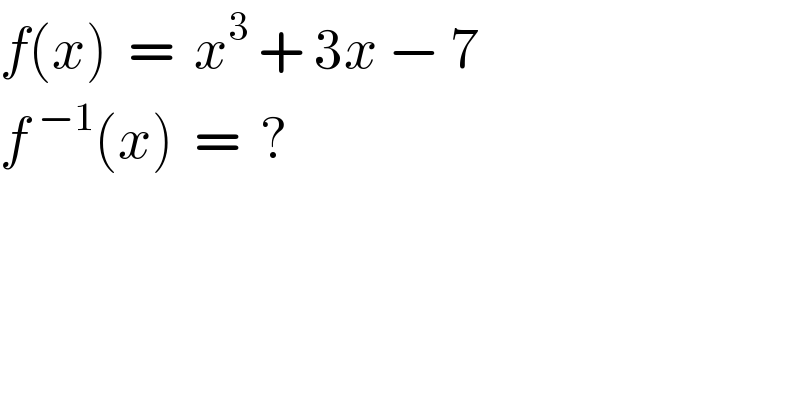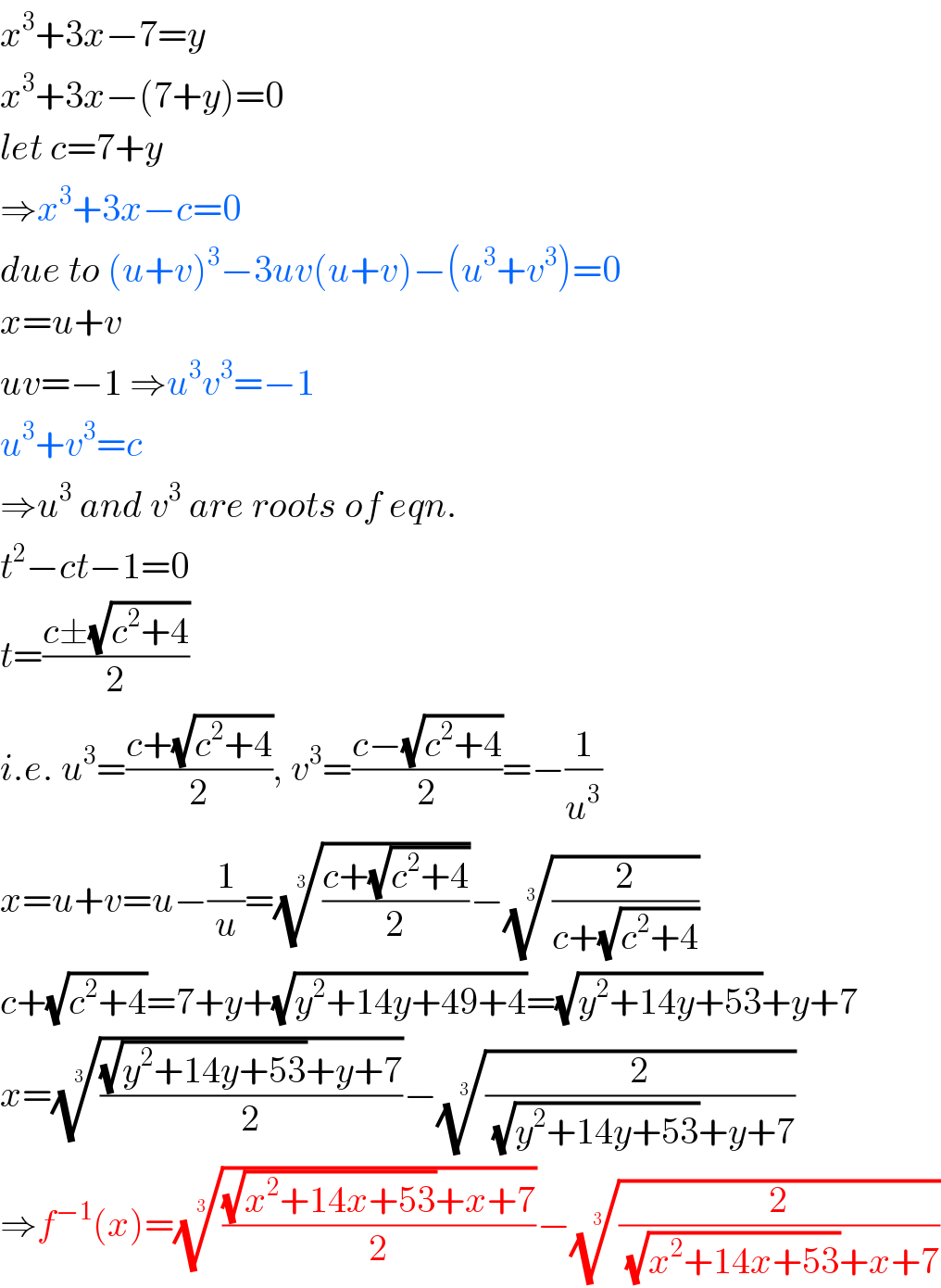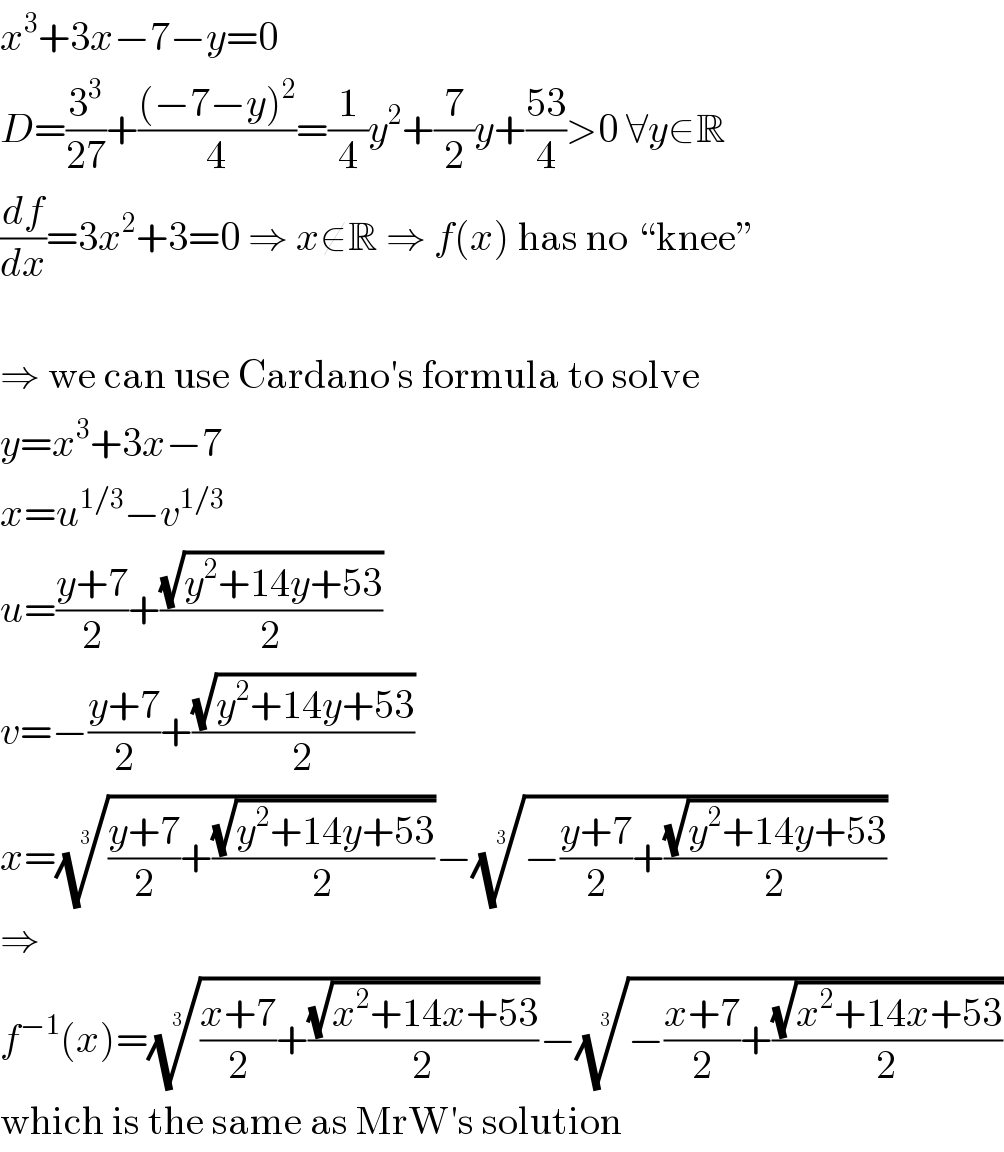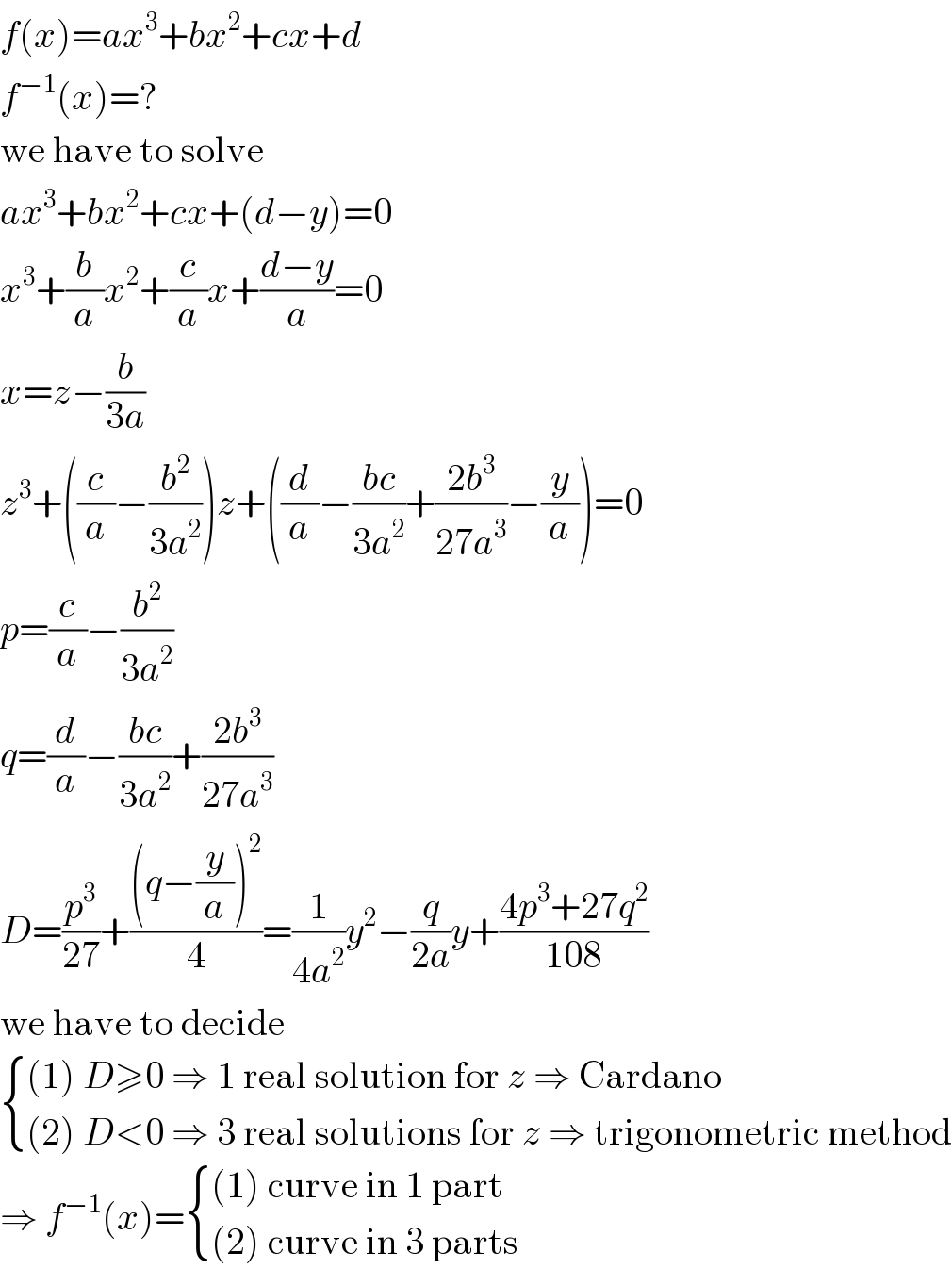
Question and Answers Forum
Question Number 60287 by naka3546 last updated on 19/May/19

Commented by mr W last updated on 19/May/19

Commented by naka3546 last updated on 19/May/19

Answered by mr W last updated on 19/May/19

Commented by naka3546 last updated on 19/May/19

Answered by MJS last updated on 19/May/19

Commented by naka3546 last updated on 19/May/19

Commented by MJS last updated on 19/May/19

